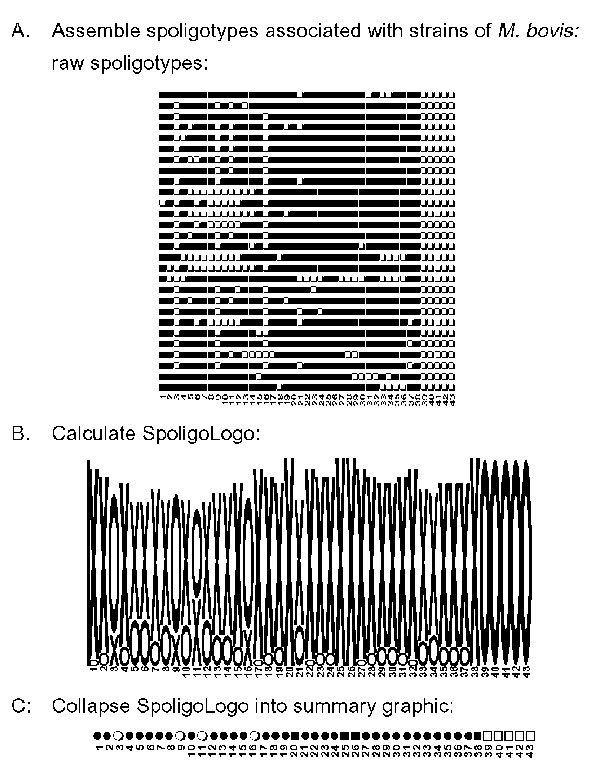Volume 8, Number 11—November 2002
THEME ISSUE
Tuberculosis Genotyping
Tuberculosis Genotyping Network, United States
Spoligologos: A Bioinformatic Approach to Displaying and Analyzing Mycobacterium tuberculosis Data
Figure 1

Figure 1. Logo analysis on spoligotypes associated with Mycobacterium bovis. The Wadsworth Center database contains 28 unique spoligotypes from strains of M. bovis. Panel A illustrates the raw hybridization data followed by the same patterns coded for logo analysis. To be compatible with WebLogo analysis, patterns were converted to a 43-character–long string consisting of the letters x and o. The letter x represents a positive hybridization, and o represents no hybridization detected for each of the 43 spacer sequences. Panel B is the graphic output from WebLogo. Numbers in each panel represent the spoligotype assay spacer sequences 1–43. Panel C shows the summary graphic of the spoligotypes by collapsing the data into a single row. Legend: x=hybridization observed to spacer, o= no hybridization observed to spacer, ■= positive hybridization in every spoligotype pattern for that individual spacer sequence, □= no hybridization, ●=positive hybridization in >50% of the patterns, ○= no hybridization in >50% of the patterns.